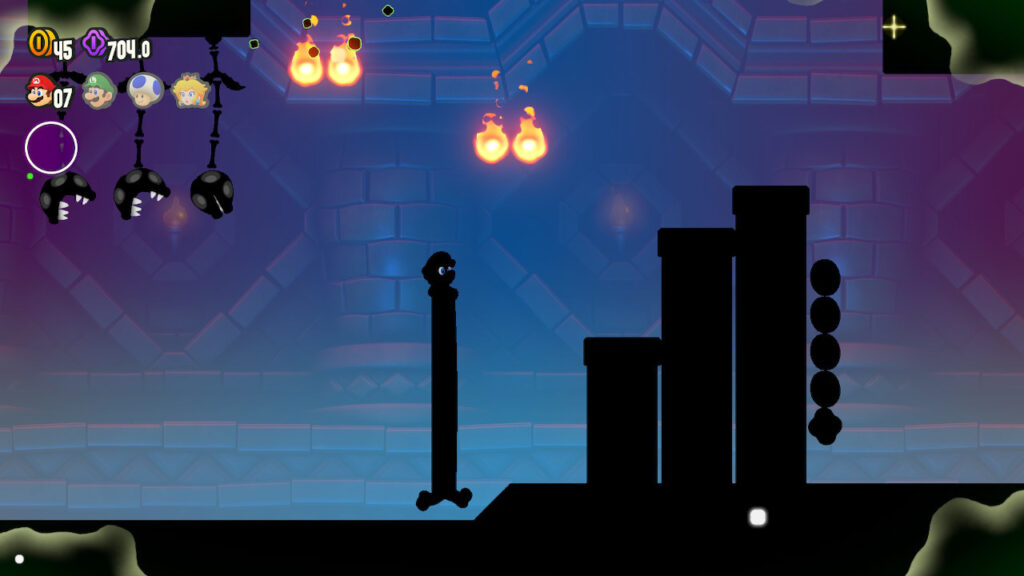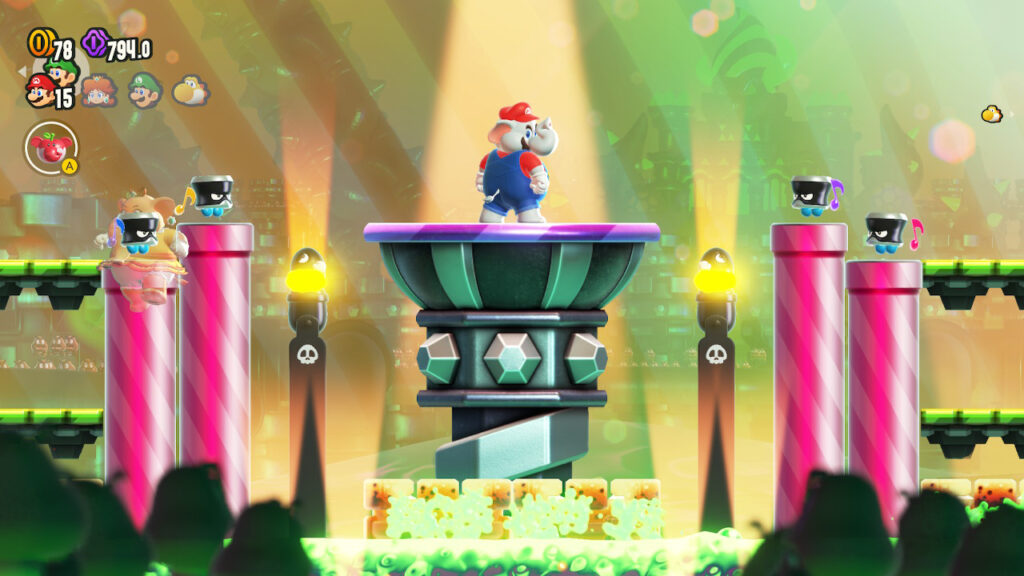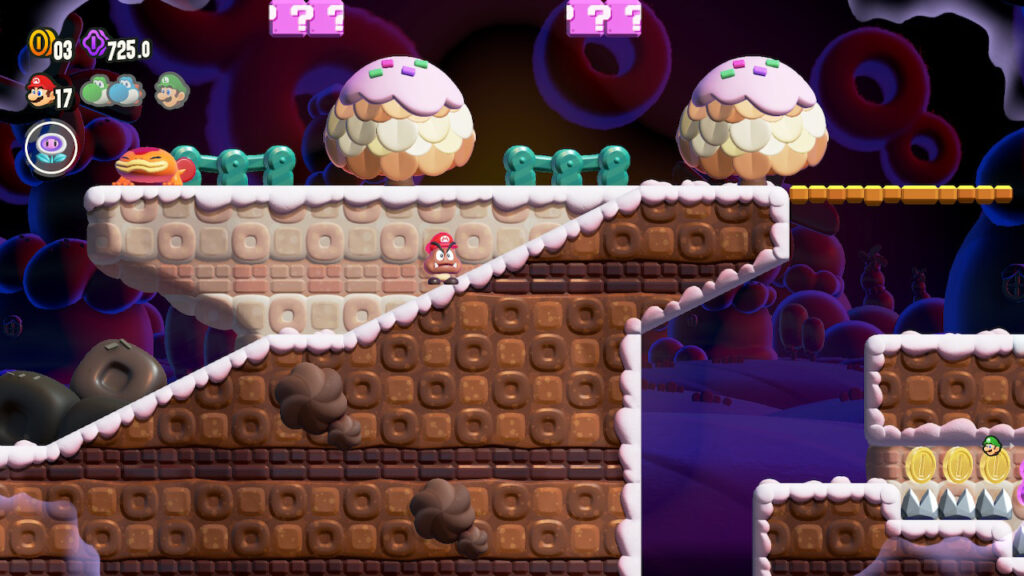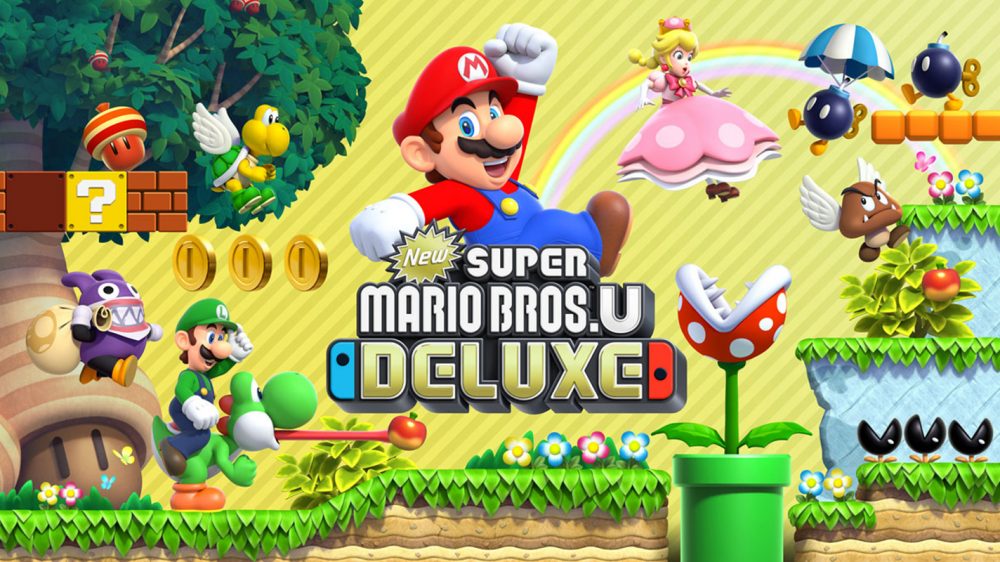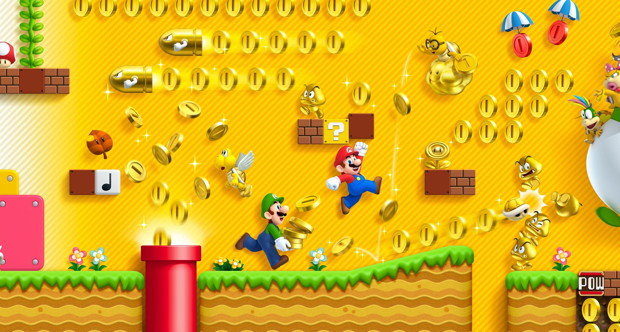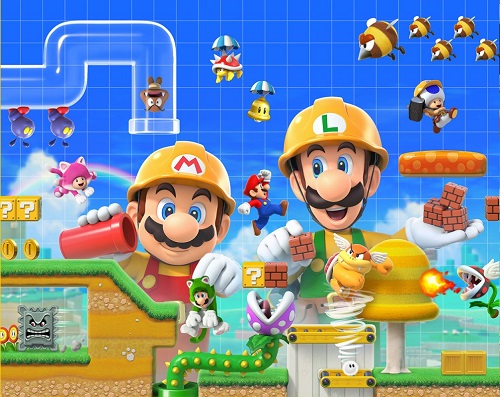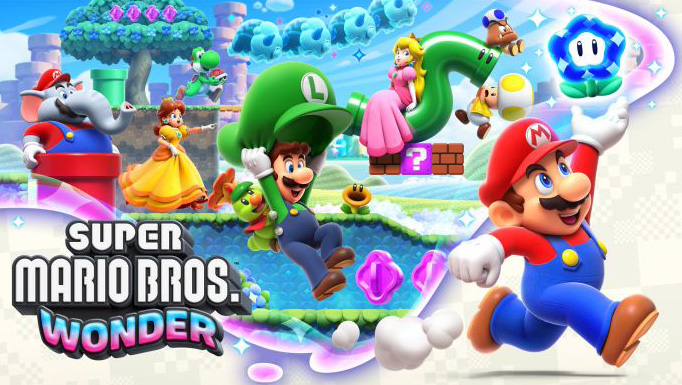
It’s been over 15 years since New Super Mario Bros. on the Nintendo DS refreshed the 2D playstyle of Mario Bros. for a new generation, which is about the gap between that game and Super Mario World on the Super Nintendo. As such, Nintendo’s Super Mario Bros. Wonder feels like a similar leap in how a 2D Mario game should look, feel and surprise and delight players in the modern landscape of games. Super Mario Bros. Wonder feels like it throws a thousand ideas at the audience, confident enough that not only will all of them stick, but some of them will become all-time favourites.
The general vibe of Super Mario Bros. Wonder is, well, wonder, or at least the wonder you might have at a crazy theme park or at a surrealist art exhibit. The adventure this time around takes place in the Flower Kingdom, a world similar enough to the Mushroom Kingdom but home to strange and powerful ‘Wonder Flowers’ and Seeds. Upon arriving for a royal reception at the kingdom, Mario’s friends see Bowser grab their treasured Wonder Flower, warping reality to fuse with the Flower Kingdom’s castle, becoming a crazy-looking living fortress that corrupts the surrounding land and imprisons its inhabitants.
Every main level in Super Mario Bros. Wonder contains a Wonder Flower for you to find, some of which are necessary to clear the path to the end of the level, and others that are totally optional. All of them warp reality in ways that get insane very quickly, from full-on musical levels which hinge on your ability to stay on beat, to transforming your character into a blob, or ball, or helpless Goomba. Some of these effects can be a little disappointing compared to others, such as causing a (by comparison) mundane rain of Super Stars, but the fact that every level includes a Wonder effect of some kind is insanely impressive. Many of these effects go beyond simple gimmicks, to fundamentally toying with how you play the game, even altering seemingly simple things like changing your perspective, to produce fresh gameplay challenges.
New power-ups are, of course, part of the offering as well, chief among them being the Elephant Apple, which transforms Mario and his buddies into prodigiously-sized elephants, capable of flicking their trunks as an attack, as well as carrying water in their trunks to spray for various effects. It’s by far the cutest and often most useful of the new bunch of power-ups, which also includes a new ‘Drill’ form which allows you to drill into the ground or ceiling, and ‘Bubble’ form, which is probably the weakest addition, spraying out slow moving bubbles which can pass through walls. More interesting is the addition of ‘Badges’ which can be collected and equipped at the start of every level. While there’s a range of characters to pick from in the game, including Mario, Luigi, Peach, Daisy and Toad, they all unusually have the same abilities. Badges allows you to modify gameplay for everyone, such as adding Luigi’s high jump, or a Peach-style ‘floating’ jump, or even a basic grappling move. Some badges grant you help for tough situations, like an one-time salvation from falling in a pit, or an extra Super Mushroom at the start of a level, while there are also ‘elite’ badges that in theory provide significant gameplay advantages, but require a fair bit of time to master and learn. There is a huge potential here for very fun and entertaining high-level play with all the ways these Badges help modify the basic gameplay.
Super Mario Bros. Wonder also offers a brand-new style for its presentation, that in some ways is unavoidably reminiscent of New Super Mario Bros. (in that it still uses 3D models), but still includes a lot more personality and charm through its embrace of 2D animation techniques. The characters themselves display a lot more emotion on their faces, from determination to joy and surprise (even in the expressions of the Goombas as they’re about to be squashed by an expansive bottom), and there’s use of smear-frames to make Mario’s run feel faster and more cartoony. Along with the new visual presentation comes a bevy of new tracks from original series’ maestro Koji Kondo (alongside others), with some cute references to many Mario tracks of games past, as well as new voice actors taking over for series’ mainstay Charles Martinet. The newcomers acquit themselves well, different enough to be slightly noticeable, but still very much matching the energy and tone established by Martinet over the course of decades. There’s a lot more voice acting this time around with the inclusion of talking flowers throughout each level, who are largely unneeded but occasionally provide a little bit of amusing dry humour.
If there’s a weak link at all, in the main gameplay offering of Super Mario Bros. Wonder, it’s probably the boss fights, which are infrequent and against Bowser Jr, as he plays with gameplay sliders like sprite size, or surface properties. They do have some creative juice behind them, but it doesn’t save them from being too quick and easy to complete, especially compared with a much better and more satisfying final boss level. Outside of the main levels, Super Mario Bros. Wonder also has an array of other level types, ranging from Arenas to beat-up enemies, to tough platforming challenges designed purely for the most experienced players. The weakest among these are probably the ‘Search Party’ levels, which hide Flower Coins in invisible blocks, or hidden sections of a level, that for all intents and purposes feels like a throwback to the (not great) days of Milon’s Secret Castle, and are only really made enjoyable at all through the online mode.
I’m not sure what I was expecting from Super Mario Bros. Wonder’s online mode, but what Nintendo have put together here feels like an essential component of the experience, especially if you’re playing as a single player. Turning online mode on shows other players completing the level at the same time as you as live ‘shadows’ running around the level, who you can communicate with via various basic emojis. The most useful part of all this is that should any player die, they become a ghost on a 5-second timer, able to be revived either by another player or a standee marker left behind by a player at any time. Aiding other players in this way nets you ‘heart’ points, and even though you’re all on your own separate single-player adventures, you’ll often find yourself slowing down to help a player that’s struggling, or leave a standee by a particularly hard section to help someone else who might need it. It’s actually a really heartwarming and fun addition to the experience, even if it can occasionally add the only slowdown ever seen in the game.
Unfortunately, some of these mechanics get in the way of the local multiplayer experience, which suffers by comparison. Playing with several people locally seems like an ideal way to play, but the camera will only ever follow one player, ostensibly Player #1 but this isn’t always the case, leaving them to either try to slow down to match the pace of everyone else, or leave the other players behind in their tracks. Leaving the screen results in death for all players who get caught there, resulting in the afore-mentioned 5-second ghost form, which goes away all too quickly unless you’re constantly on top of making sure to revive your friends. If everyone you’re playing with is at a similar skill level to you, it’s probably OK, but for more inexperienced or younger players, I can imagine this getting frustrating for everyone involved pretty quickly. Perhaps this is the reason for the inclusion of Yoshi and Nabbit as player-selectable characters which are immune to damage. Either way, it’s the only disappointment in an otherwise outstanding game.
Super Mario Bros. Wonder may not be as big of a visual jump from Super Mario World to New Super Mario Bros. but it feels like one. It feels like a mission statement from Nintendo that they still have plenty of ideas for Mario, and they’re not running out of creativity any time soon, setting a standard for future games to come, whether they be with 2D or 3D gameplay. With a charming artstyle, endlessly creative gimmicks and surprises, challenging platforming and a fun and friendly online mode, Super Mario Bros. Wonder is Mario at its best.
-Astonishing, unending series of creative concepts for levels, gimmicks and power-ups -Charming new art-style breathes life into the look of 2D Mario -Plenty of challenging platforming for Mario veterens -Fun and endearing online mode enhances solo play
-Local multiplayer unfortunately misses the mark somewhat

